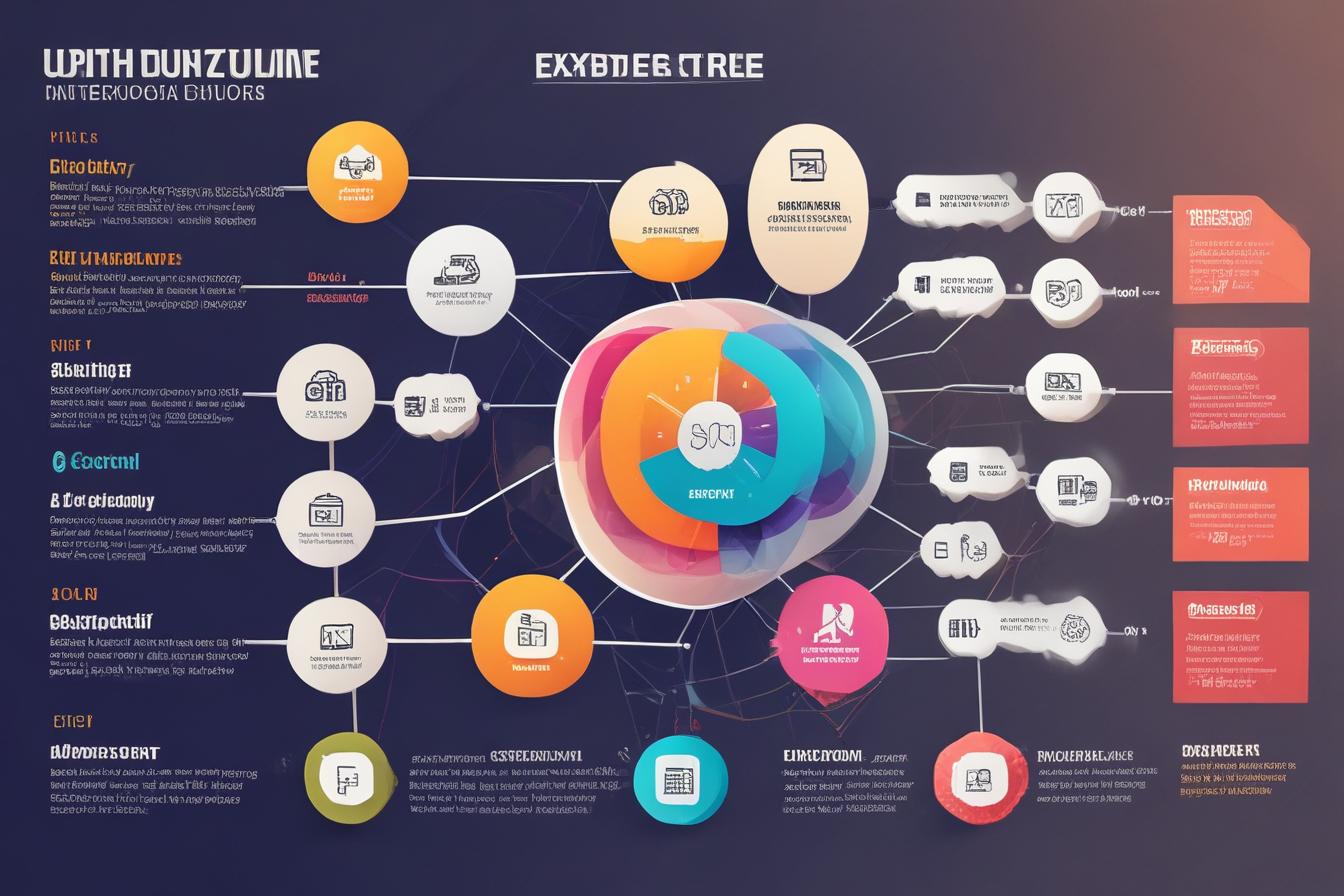What is Content Mapping for SEO?
In the world of search engine optimization (SEO), content mapping is a strategic approach that aligns your content creation efforts with user intent and search queries. It involves meticulously planning and organizing your website’s content to cater to the specific needs and questions of your target audience at different stages of their journey.
Content mapping is a crucial part of an effective content strategy, as it ensures that your website provides valuable, relevant information to users, ultimately improving your search engine rankings and driving more qualified traffic to your site.
Understanding User Intent
User intent, also known as search intent, refers to the underlying motivation behind a user’s search query. It could be informational (seeking knowledge or answers), navigational (looking for a specific website or page), transactional (intending to make a purchase), or any combination of these. Content mapping aims to identify and address these varying intents by creating content that directly answers users’ queries.
Mapping to Search Queries
To effectively map content to search queries, you need to conduct thorough keyword research and analysis. This process involves identifying the specific phrases and terms your target audience is using when searching for information related to your products, services, or industry. By aligning your content with these search queries, you increase the chances of appearing prominently in search results and attracting qualified traffic to your website.
Why is Content Mapping Crucial for SEO Success?
Content mapping is critical for SEO success for several reasons:
Improved User Experience
By providing content that directly addresses users’ queries and needs, content mapping enhances the overall user experience on your website. When users find the information they’re looking for quickly and easily, they are more likely to engage with your content, spend more time on your site, and potentially convert into customers.
Better Search Engine Rankings
Search engines prioritize websites that offer high-quality, relevant content that satisfies user intent. By mapping your content to search queries and user intent, you increase the likelihood of ranking higher in search engine results pages (SERPs) for your target keywords and phrases.
Increased Topical Authority
Content mapping allows you to establish topical authority by comprehensively covering a subject area or topic cluster. When you create a cohesive, interconnected network of content that addresses various aspects of a topic, search engines perceive your website as a trusted and authoritative source, potentially leading to higher rankings and more organic traffic.
Step-by-Step Guide to Content Mapping for SEO
Implementing an effective content mapping strategy for SEO involves several steps:
1. Define Your Target Audience
The first step in content mapping is to clearly define your target audience. Understand their demographics, interests, pain points, and goals. This information will guide the development of content that resonates with your audience and addresses their specific needs.
2. Conduct Keyword Research
Keyword research is the foundation of content mapping. Identify the terms and phrases your target audience is using when searching for information related to your products, services, or industry. Use tools like Google’s Keyword Planner, SEMrush, or Ahrefs to uncover relevant keywords and their search volume, competition, and user intent.
3. Analyze User Intent
For each keyword or search query, analyze the underlying user intent. Determine whether users are seeking information, looking to navigate to a specific website, or intending to make a purchase. This understanding will shape the type of content you create and how you present it.
4. Organize Content into Topic Clusters
Group related keywords and content ideas into topic clusters. This approach allows you to create a comprehensive content hub around a broader topic, with individual pieces of content addressing specific subtopics and supporting the main theme.
5. Map Content to User Journey
Consider the different stages of the user journey, from initial awareness to consideration and decision-making. Map your content to address the specific needs and questions that arise at each stage, ensuring a seamless and informative experience for your audience.
6. Develop a Content Plan
Based on your content mapping analysis, create a detailed content plan that outlines the types of content (e.g., blog posts, videos, infographics), topics, keywords, and publishing schedule. Prioritize content creation based on search volume, competition, and potential impact.
7. Create and Optimize Content
Develop high-quality, engaging content that aligns with your content mapping strategy. Optimize your content for search engines by incorporating relevant keywords, leveraging headings and subheadings, and including internal and external links.
8. Monitor and Refine
Regularly monitor the performance of your content and adjust your strategy as needed. Analyze metrics such as traffic, engagement, rankings, and conversions to identify areas for improvement and refine your content mapping approach.
Mapping Content to User Intent and Search Queries
One of the core principles of content mapping is aligning your content with user intent and search queries. This involves understanding the specific needs and motivations behind each search and creating content that directly addresses those queries.
Identifying User Intent
User intent can be broadly categorized into four main types:
- Informational: Users are seeking information, answers, or knowledge on a particular topic.
- Navigational: Users are looking for a specific website or online resource.
- Transactional: Users intend to make a purchase or complete a transaction.
- Commercial Investigation: Users are researching products or services with the potential to make a purchase in the future.
By understanding the intent behind each search query, you can tailor your content to provide the most relevant and valuable information to users.
Mapping Content to Search Queries
To map your content effectively, follow these steps:
- Analyze Search Queries: Examine the specific keywords and phrases users are typing into search engines. Look for patterns, variations, and related terms.
- Categorize Queries by Intent: Determine the underlying intent behind each search query and group them accordingly.
- Create Content Clusters: Develop content clusters or topic hubs that comprehensively address a broad topic or category, with individual pieces of content targeting specific search queries within that cluster.
- Optimize Content: Optimize your content by incorporating relevant keywords, creating clear and descriptive titles and meta descriptions, using headings and subheadings effectively, and ensuring a logical content structure.
- Promote and Link Content: Promote your content through various channels and link internally to related pieces, reinforcing the topical authority and relevance of your content.
By mapping your content to user intent and search queries, you can provide a more seamless and satisfying experience for your audience, increasing the chances of appearing prominently in search results and driving more qualified traffic to your website.

Optimizing Content Structure and Hierarchy
Effective content mapping goes beyond just creating relevant content – it also involves structuring and organizing that content in a way that is easy for search engines and users to understand and navigate.
Establishing a Clear Content Hierarchy
A well-defined content hierarchy helps search engines understand the relationships between different pieces of content on your website. This can be achieved by:
- Using a logical URL structure that reflects your content hierarchy
- Implementing clear navigation menus and internal linking patterns
- Utilizing headings and subheadings effectively (H1, H2, H3, etc.)
- Creating content silos or topical clusters around broader themes
By organizing your content in a hierarchical and intuitive manner, you make it easier for search engines to crawl, index, and understand the structure and relationships within your website’s content.
Optimizing Page Layout and Content Flow
In addition to content hierarchy, the layout and flow of individual pages play a crucial role in providing a positive user experience and improving engagement metrics. Consider the following best practices:
- Use descriptive and keyword-rich titles: Capture the essence of the content and include relevant keywords in your page titles and headings.
- Structure content logically: Present information in a logical and easy-to-follow sequence, using headings, subheadings, and formatting elements (e.g., bullet points, numbered lists) to break up text and improve readability.
- Incorporate visuals: Include relevant images, charts, or videos to supplement and enhance the written content.
- Utilize white space: Ensure proper spacing and use white space effectively to create a clean and visually appealing layout.
- Optimize for mobile: With the increasing prevalence of mobile search, ensure your content is optimized for various screen sizes and provides a seamless mobile experience.
By optimizing your content structure and layout, you not only improve the user experience but also send positive signals to search engines, potentially leading to better rankings and increased engagement.

Leveraging Content Mapping for Topical Authority
One of the key advantages of content mapping is its ability to help you establish topical authority in your niche or industry. By creating a comprehensive network of interconnected content that covers various aspects of a broader topic, you position your website as a trusted and authoritative source in that subject area.
Building Topic Clusters
Topic clusters, also known as content hubs or pillars, are the foundation of establishing topical authority. They involve creating a central, comprehensive piece of content (the « pillar » or « hub ») that covers a broad topic in-depth. This pillar content is then supported by a series of related, more granular content pieces (the « clusters » or « spokes ») that delve into specific subtopics or aspects of the main theme.
By creating topic clusters, you demonstrate a deep understanding and expertise in the subject matter, which can positively influence your search engine rankings and visibility.
Internal Linking Strategies
Internal linking plays a crucial role in reinforcing your topical authority and helping search engines understand the relationships between your content pieces. Here are some effective internal linking strategies to leverage:
- Link from pillar content to supporting clusters: Within your comprehensive pillar content, link out to relevant cluster content that explores specific subtopics in greater detail.
- Link between related clusters: Establish contextual links between related cluster content pieces, creating a web of interconnected information.
- Use descriptive anchor text: When creating internal links, use descriptive and keyword-rich anchor text that accurately reflects the content being linked to.
- Prioritize relevance over quantity: Focus on creating relevant and meaningful internal links, rather than simply linking for the sake of linking.
By strategically implementing internal linking within your content network, you reinforce the topical relationships and hierarchy, making it easier for search engines to understand and value your content as an authoritative resource.
Leveraging External Signals
In addition to on-page optimization and internal linking, external signals also play a role in establishing topical authority. These include:
- High-quality backlinks: Earning backlinks from reputable and relevant websites in your industry can signal to search engines that your content is valuable and trustworthy.
- Social shares and engagement: Content that resonates with your audience and generates social shares, comments, and engagement can contribute to your perceived authority.
- User engagement metrics: Positive user engagement metrics, such as low bounce rates, high time on page, and returning visitors, can indicate that your content is providing value and satisfying user intent.
By combining a well-executed content mapping strategy with external signals of authority, you increase the likelihood of ranking prominently for relevant search queries and establishing your website as a go-to resource in your niche or industry.

Advanced Content Mapping Strategies for Enterprise SEO
For larger organizations with complex websites and diverse product or service offerings, content mapping can become even more critical for achieving and maintaining SEO success. Here are some advanced strategies to consider:
Scaling Content Mapping with AI Technology
Manually creating and optimizing content at scale can be a daunting and resource-intensive task for enterprise-level organizations. This is where AI-powered content solutions like ContentScale.fr can be a game-changer. ContentScale.fr leverages advanced machine learning algorithms to generate high-quality, SEO-optimized content at a fraction of the cost and time compared to traditional methods.
By utilizing ContentScale.fr, you can streamline your content mapping efforts and rapidly produce large volumes of relevant, engaging content tailored to your specific keywords, topics, and user intent. This allows you to scale your content strategy more efficiently, stay ahead of competitors, and dominate search engine rankings across multiple niches or verticals.
Implementing Agile Content Workflows
In enterprise SEO, the ability to adapt and respond to changing market conditions, user preferences, and search engine algorithms is paramount. Implementing agile content workflows can help you stay nimble and continuously refine your content mapping strategy.
This involves:
- Continuous monitoring and analysis: Regularly track and analyze key performance metrics, search trends, and user behavior to identify opportunities for optimization and improvement.
- Iterative content creation: Adopt an iterative approach to content creation, where you continuously update, refine, and expand your content based on data-driven insights.
- Cross-functional collaboration: Foster collaboration between SEO specialists, content creators, data analysts, and other stakeholders to ensure a cohesive and integrated content mapping strategy.
- Automation and technology integration: Leverage automation tools and technologies to streamline processes, improve efficiency, and scale your content mapping efforts.
By embracing agile principles and methodologies, you can ensure that your content mapping strategy remains dynamic, responsive, and aligned with evolving user needs and search engine algorithms.
Leveraging AI Content Solutions Like ContentScale.fr
As mentioned earlier, AI-powered content solutions like ContentScale.fr can be a game-changer for enterprise content mapping efforts. By leveraging advanced natural language processing and machine learning capabilities, ContentScale.fr allows you to:
- Generate high-quality, SEO-optimized content at scale, saving significant time and resources
- Produce content tailored to specific keywords, topics, and user intent, ensuring relevance and alignment with your content mapping strategy
- Continuously refine and optimize content based on real-time data and insights
- Stay ahead of competitors by rapidly creating and deploying content across multiple channels and platforms
By integrating ContentScale.fr into your enterprise content mapping workflow, you can unlock new levels of efficiency, scalability, and productivity, while delivering a consistently high-quality content experience to your audience.
Conclusion
Content mapping is a strategic and comprehensive approach to SEO that aligns your content creation efforts with user intent and search queries. By understanding your audience’s needs, mapping content to relevant keywords and queries, and optimizing content structure and hierarchy, you can improve user experience, increase topical authority, and ultimately achieve higher search engine rankings.
Remember, content mapping is an ongoing process that requires continuous monitoring, analysis, and refinement. Embrace agile methodologies, leverage advanced technologies like ContentScale.fr, and stay ahead of the curve by consistently delivering valuable, relevant, and optimized content to your target audience.
Start implementing a comprehensive content mapping strategy today, and unlock the full potential of
